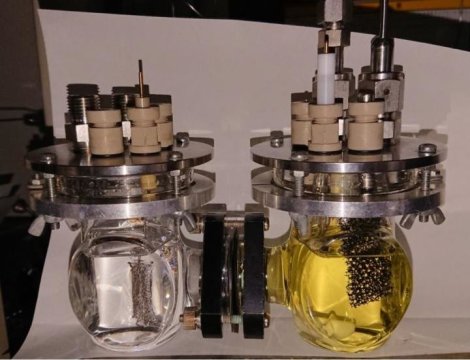[ad_1]
Chemists at Tokyo Institute of Technology (Tokyo Tech) propose an innovative way to achieve carbon capture using a rhenium-based electrocatalytic system that is capable of reducing low-concentration CO2 (even 1%) with high selectivity and durability, which is a new potential technology to enable direct utilization of CO2 in exhaust gases from heavy industries.
Scientists are closer to finding effective ways to reduce CO2 levels — a vital part of responding to climate change and energy efficiency challenges.
A study led by Osamu Ishitani of the Department of Chemistry, Tokyo Tech now demonstrates the advantages of applying electrocatalysis1 to capture low-concentration CO2.
In their study published in Chemical Science, Ishitani and colleagues including Hiromu Kumagai and Tetsuya Nishikawa drew on decades of work on honing the capabilities of a rhenium-based catalyst, and demonstrated its ability to reduce low-concentration CO2 in the presence of a chemical called triethanolamine (TEOA).
Compared to many previous studies that have focused on reducing pure CO2, few have explored how to improve direct capture of low-concentration CO2 — a topic that warrants further investigation, considering that plants harness low concentrations of CO2 (about 400 ppm, that is 0.04% of the atmosphere) and exhaust gases from heavy industries typically contain low levels of CO2 (around 3-13%).
By avoiding the need for additional energy-consuming condensation processes, their strategy, if scaled up, could provide a more viable, environmentally friendly solution to CO2 capture in many settings.
In a series of experiments to assess electrocatalytic activity, the researchers found that at a CO2 concentration of 1%, the rhenium-based catalyst showed very high selectivity (94%) towards carbon monoxide (CO) formation.
A likely reason behind the high performance, the researchers say, is the efficient insertion of CO2 into the rhenium-oxygen bond.
The researchers aim to continue systematically investigating promising strategies to help reduce real-world CO2 levels.
Story Source:
Materials provided by Tokyo Institute of Technology. Note: Content may be edited for style and length.
[ad_2]















